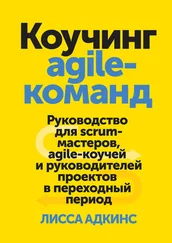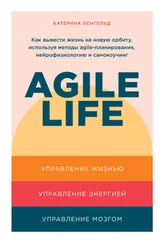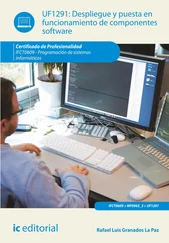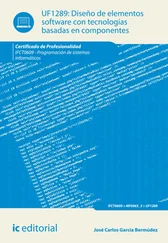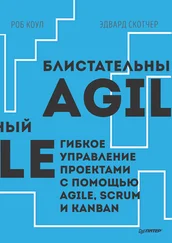The domain expert could jump the large gap presented by the short use case document and then produce, as needed, and only as needed, communication to fill in and reduce the size of the gaps so that the Russian programmers could jump across.
The domain expert did not attempt to communicate perfectly. He managed the continuous incompleteness of the communications by interacting with the programmers in person and watching what they produced. Luke Hohmann (1998) refers to this as "reducing the equivocality" in the communication.
What the domain expert understood was that he did not have to reduce the equivocality to zero. He only had to reduce it to the point that the Russian programmers could take meaningful action.
Given that complete communication is never possible, the task on a project is not to try for complete communication but to manage the incompleteness of our communications.
The target is to reduce equivocality enough for appropriate action to be taken. That means guessing how much is needed, where to stop, when and how to make the gaps smaller, and how to can help the receivers to jump larger gaps.
Software projects are short on time and money, and making the gap smaller costs both. You need to discover how large a gap you can get by with at each moment, how much equivocality you can tolerate, and stop there.
Three Levels of Listening
People who are learning and mastering new skills pass through three quite different stages of behavior: following, detaching, and fluent.
People in the following stage look for one procedure that works. Even if ten procedures could work, they can't learn ten at once. They need one to learn first, one that works. They copy it; they learn it. In this stage, practitioners measure success by (a) whether the procedure works and (b) how well they can carry out the procedure. The 1708 Card Reader
We watched a Humanities major encountering the Univac 1708 card readers for the first time in her first programming class (this was 1974).
Her short program didn't compile. Upset at this failure, she requested help from the student assistant. When the program failed to compile a second time, she became nearly hysterical, and shouted at the assistant in tears: "But you promised me it would work!" Her reaction is typical of stage one learning. The reward for success in this first stage is the sense of, "at least this thing works," and "I can at least manage to accomplish that."
People moving to some new skill domain, whether software or some other, want explicit instructions. In terms of written software development methodologies, this means a thick, detailed manual. The thickness and the detail offer signs of safety for the learning.
In the detaching, or Level 2, stage, people locate the limitations of the single procedure and look for rules about when the procedure breaks down. They are actually in the first stage of a new learning; namely, learning the limits of the procedure. The person in the detaching stage learns to adapt the procedure to varying circumstances. She is now more interested in learning the ten alternative procedures, in learning when each is most applicable and when each breaks down.
A large-scale technique breakdown of this sort occurred in our industry when large software contracting firms, finely tuned to developing software using Information Engineering (IE) architectures, had to begin delivering object-oriented software. After years of unsuccessfully trying to adapt IE methods, they had to develop completely new development methodologies, often regressing through quite unstructured development before discovering new structures to support the new projects. Most of these organizations now have two methodologies, one for IE and another for object-oriented (OO) development.
In the third, fluent stage, it becomes irrelevant to the practitioner whether she is following any particular technique or not. Her knowledge has become integrated throughout a thousand thoughts and actions. Ask her if she is following a particular procedure, and she is likely to shrug her shoulders: It doesn't matter to her whether she is following a procedure, improvising around one, or making up a new one. She understands the desired end effect and simply makes her way to that end.
A team leader who has led a number of projects in different areas doesn't care about "methodology" any more: "Just leave us alone and we'll deliver it," she says. She simply observes and senses that more discipline is needed here, more freedom needed there, more communication needed in some other place. This is the Level 3 practitioner.
The Three Levels and Methodologies
The same three levels apply to listening, coaching, or reading about software development. It is important to respect all three levels, as the following story illustrates: Level Mix-up with CRC Cards Three of us, unaware of these levels of learning, accidentally crossed to the wrong level on our first design mentoring assignment. We decided to lead small design sessions using Class-Responsibility-Collaborator (CRC) cards. (See Beck, 1987.)
The three of us worked slightly differently, which upset the designers, who were newcomers to object-oriented design. They said, "You are all doing something different! Which one of you is right, and why don't the others do that, too!"
We tried saying, "It doesn't matter. They all work." But that did not help the beginners, who were confused: Should they hold the cards up or leave them on the table? Should they write down all the instance variables, or some, or none? And so on.
We knew that the session could be made to work using any of those variants, but the beginners were still in Level 1 and needed one defined way of working that they could apply several times in a row.
A programming book aimed at the Level 1 audience would work to assure the reader that there really is a way of developing software that works, and that if the reader will just follow it, success will follow. Such a book might be called The Science of Programming (Gries 1983) or The Discipline of Programming (Humphreys 1991).
A methodology text aimed at the Level 1 audience describes processes, techniques, and standards in detail. The very detailed templates in the Rational Unified Process (RUP) serve Level 1 practitioners. The big methodologies of Andersen Consulting, Ernst & Young, and the like fall into this category.
A programming book aimed at the Level 2 audience might be called The Art of Programming (Knuth 1997). It would show the reader several techniques for working, with examples and notes about when each is more useful.
A book aimed at combined Level 2 and Level 3 audiences might be called The Laissez-Faire of Programming (think of that as an alternate title for this book) or The Pragmatic Programmer (Hunt 2000). It would name issues to bear in mind and identify techniques that the practitioner might learn, pick up, and put down as needed. The expert will find it a useful library of ideas, but the beginner finds it lacking specific rules.
The Level 3 listener knows that all the published software development techniques are personal and somewhat arbitrary. Discussions among Level 3 people sound distressingly Zen:
"Do whatever works."
"When you are really doing it, you are unaware that you are doing it."
"Use a technique so long as it is doing some good." To someone at the fluent level of behavior, this is all true. To someone still detaching, it is confusing. To someone looking for a procedure to follow, it is useless.
My book, Writing Effective Use Cases (Cockburn 2001), is a technique book with different information for readers at the three levels.
For practitioners at the first level in use case writing, it details the minutiae of use case writing. It provides them with specific procedures to follow. For practitioners at the second level, it contains rules and tips for varying the basic rules. The book does not try to teach anything specific to the Level 3 reader, who will, in any case, find something new in it to try out one day. Instead, it assures the Level 3 reader that the rules are not binding, that a lot of different ways of working can be effective, and that the people at Levels 1 and 2 are being told this, too.
Читать дальше

